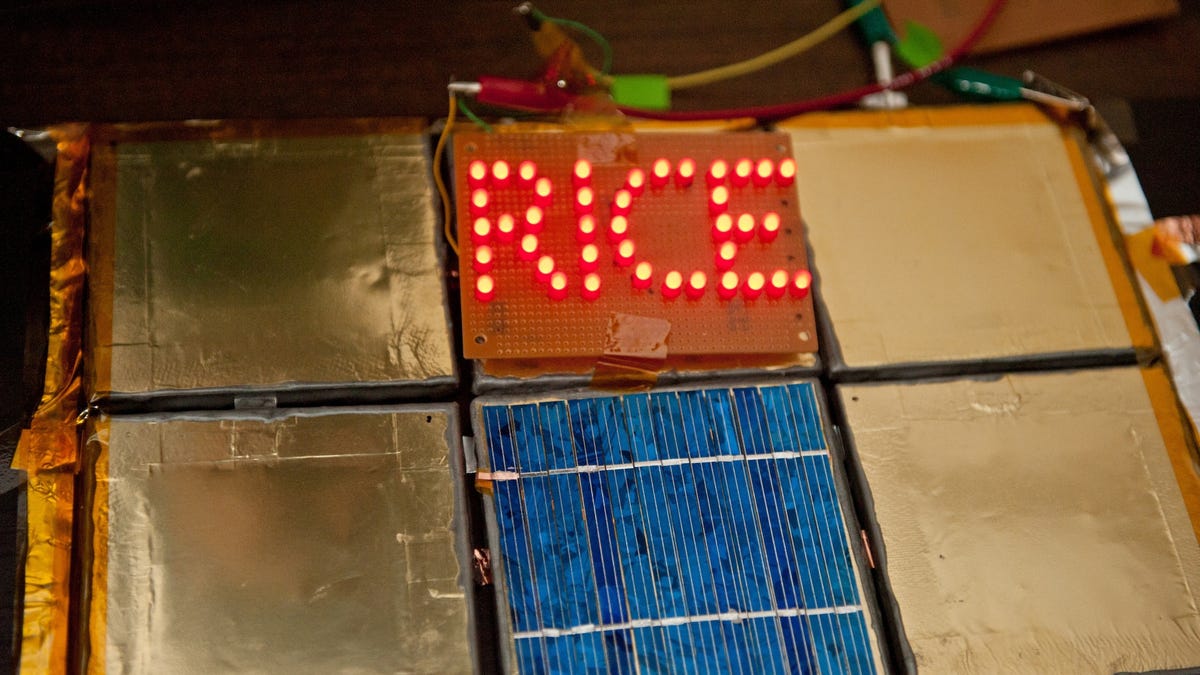Spray-on battery makes power paintable
Crave looks at a new technology that redefines the concept of the traditional battery. In other words, this ain't your pappy's AA.

Brainiacs at Rice University today debuted a spray-on lithium ion battery that they say could be applied to nearly any surface. You read that right -- a paintable battery.
The paint contains layers, each representing a necessary component of a conventional battery -- current collectors made in part from purified single-wall carbon nanotubes, a cathode, an anode, and a polymer separator -- as described in a report published today in Nature authored by Rice graduate student Neelam Singh and her team. Spraying the painted battery is a multilayer process, but when you're done, you have a covered surface that stores energy and discharges it when needed -- that is, a battery.
Skeptical? One experiment conducted by Singh and her team reveals the promise of the technology: Nine bathroom tile-based batteries were connected in parallel. One was topped with a solar cell that converted power from a white laboratory light. When fully charged by both the solar panel and house current, the batteries alone powered a set of light-emitting diodes that spelled out "Rice" for six hours; the batteries provided a steady 2.4 volts.
Even after 60 charge/discharge cycles, the unusual battery barely lost capacity. The team also airbrushed the spray formula onto ceramic bathroom tiles, flexible polymers, glass, stainless steel, and a beer stein. (That's sure one way to charge up a drink.)
Singh worked on the paintable battery with a wide range of people from Rice and the scientific community, including graduate students Charudatta Galande and Akshay Mathkar; Los Alamos National Laboratory researcher Wai Gao; research scientist Arava Leela Mohana Reddy; Rice Quantum Institute interns Andrea Miranda; and Alexandru Vlad, a postdoctoral researcher at the Universite Catholique de Louvain, Belgium.
Singh and her team continue to work on refining this spray-on battery. Future versions of the concept could include electrolytes that make it easier to paint on batteries in the open air, or sprayed batteries on "snap-together tiles that can be configured in any number of ways," as the university release puts it.
Did she just hint at Lego-style batteries? Sign me up!

